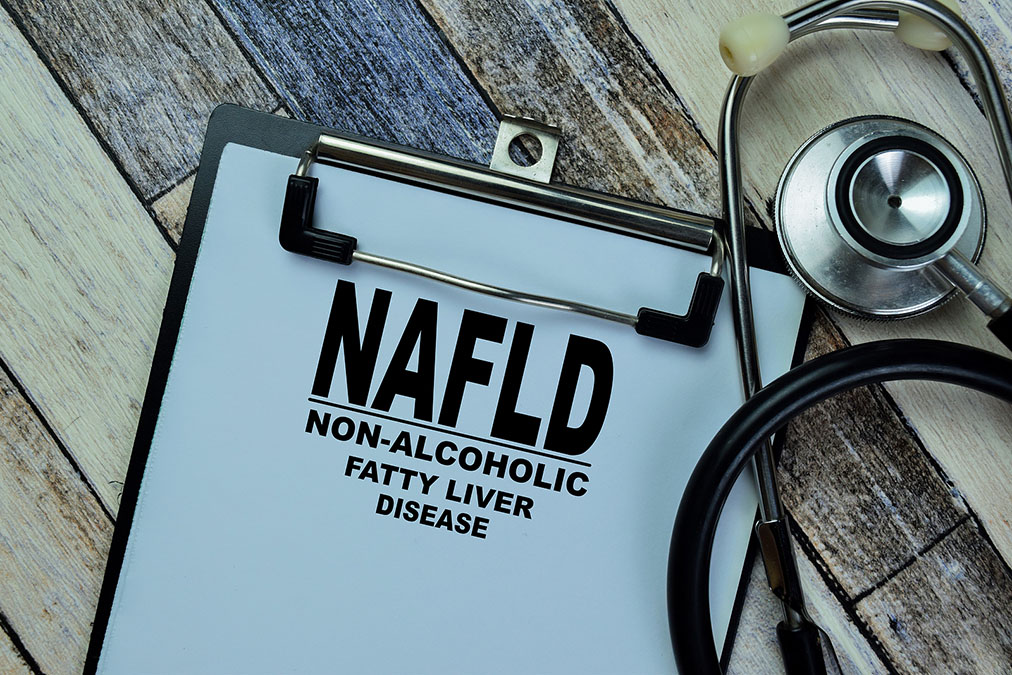 It’s well known that the typical American diet, high in fat, sugar, processed foods, and red meat, poses a risk of nonalcoholic fatty liver disease (NAFLD).
It’s well known that the typical American diet, high in fat, sugar, processed foods, and red meat, poses a risk of nonalcoholic fatty liver disease (NAFLD).
So, what should we eat instead to tackle NAFLD?
A team of researchers has tested the effects of a diet from another continent on NAFLD. Their results, reported in the journal Nutrients, are breathtaking.
The authors of this study knew that the effects of Asian diets on NAFLD had not been properly tested in good scientific studies, so they decided to close this gap in the literature.
To be precise, they wanted to know whether the Japanese diet could limit liver damage caused by diet and other lifestyle factors.
They recruited 136 patients with NAFLD and measured how serious their liver damage was using a new system called the Agile 3+ score. This score indicates whether one’s liver is on a trajectory to better health or worse liver damage.
They checked their participants’ diets using a 12-part Japanese diet index, and they also measured their muscle mass.
Muscle mass is considered to be important because muscle helps with glucose metabolism. Low glucose metabolism is a risk factor for NAFLD, so low muscle mass may be an NAFLD risk too.
Among the participants, about half were men, half were women, and 34% had a medium to high risk of liver damage, according to the Agile 3+ score system.
Let’s examine the findings.
-
1. Patients with medium to high-risk scores were, on average, 15 years older than those with low-risk scores. They also had more cases of diabetes and high blood pressure.
2. The Japanese diet index score was linked with higher intake of protein, potassium, magnesium, iron, folate, vitamin C, beta-carotene, alpha-tocopherol, and dietary fiber. For women, it was also associated with higher intake of calcium, cholesterol, and salt.
3. The higher the Japanese diet score was, the lower the risk was of having a medium to high-risk Agile 3+ score.
4. Among specific foods, eating more soybeans, fish, shellfish, and seaweed also lowered the chance of having a medium to high-risk score.
5. There wasn’t a clear link between muscle mass and the Agile 3+ scores, but people whose muscle mass was in the top 25% for their gender had a lower risk of having a medium to high-risk score.
6. The Japanese diet score didn’t have a clear link with muscle mass, but eating more soybeans and foods made from soybeans was linked to higher muscle mass.
Therefore, eating the Japanese diet is a good way to prevent liver damage due to NAFLD.
This diet includes foods like whole grain rice, seafood, soy products, vegetables, fruits, fermented foods like miso and natto, soba (buckwheat noodles), thinly sliced beef, and green tea.

 Overcoming IBD
Overcoming IBD Multiple Sclerosis
Multiple Sclerosis Banishing Bronchitis
Banishing Bronchitis Gum Disease Gone
Gum Disease Gone Overcoming Onychomycosis
Overcoming Onychomycosis Neuropathy No More
Neuropathy No More The Prostate Protocol
The Prostate Protocol Brain Booster
Brain Booster
 Ironbound
Ironbound
 Solution for Shingles
Solution for Shingles
 The Bone Density Solution
The Bone Density Solution
 The Ultimate Healing Protocol
The Ultimate Healing Protocol
 The Parkinson's Protocol
The Parkinson's Protocol
 The Chronic Kidney Disease Solution
The Chronic Kidney Disease Solution
 Overthrowing Anxiety
Overthrowing Anxiety The Fatty Liver Solution
The Fatty Liver Solution The Hypothyroidism Solution
The Hypothyroidism Solution
 The End of Gout
The End of Gout The Blood Pressure Program
The Blood Pressure Program
 The Oxigized Cholesterol Strategy
The Oxigized Cholesterol Strategy
 Stop Snoring And Sleep Apnea Program
Stop Snoring And Sleep Apnea Program
 The Arthritis Strategy
The Arthritis Strategy The Vertigo & Dizziness Program
The Vertigo & Dizziness Program The 3-Step Diabetes Strategy
The 3-Step Diabetes Strategy Hemorrhoids Healing Protocol
Hemorrhoids Healing Protocol The Erectile Dysfunction Master
The Erectile Dysfunction Master Weight Loss Breeze
Weight Loss Breeze The IBS Program
The IBS Program The Insomnia Program
The Insomnia Program The Migraine and Headache Program
The Migraine and Headache Program The Neck Pain Solution
The Neck Pain Solution The Menopause Solution
The Menopause Solution The Ejaculation Master
The Ejaculation Master The TMJ Solution
The TMJ Solution The Acid Reflux Solution
The Acid Reflux Solution The Fibromyalgia Solution
The Fibromyalgia Solution The Psoriasis Strategy
The Psoriasis Strategy